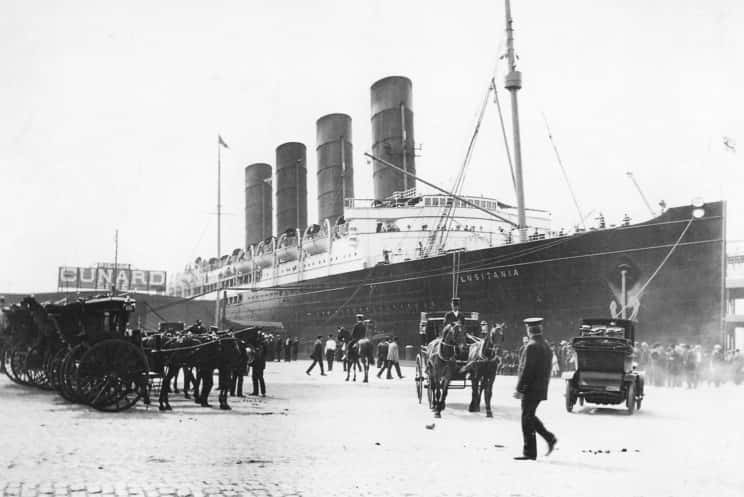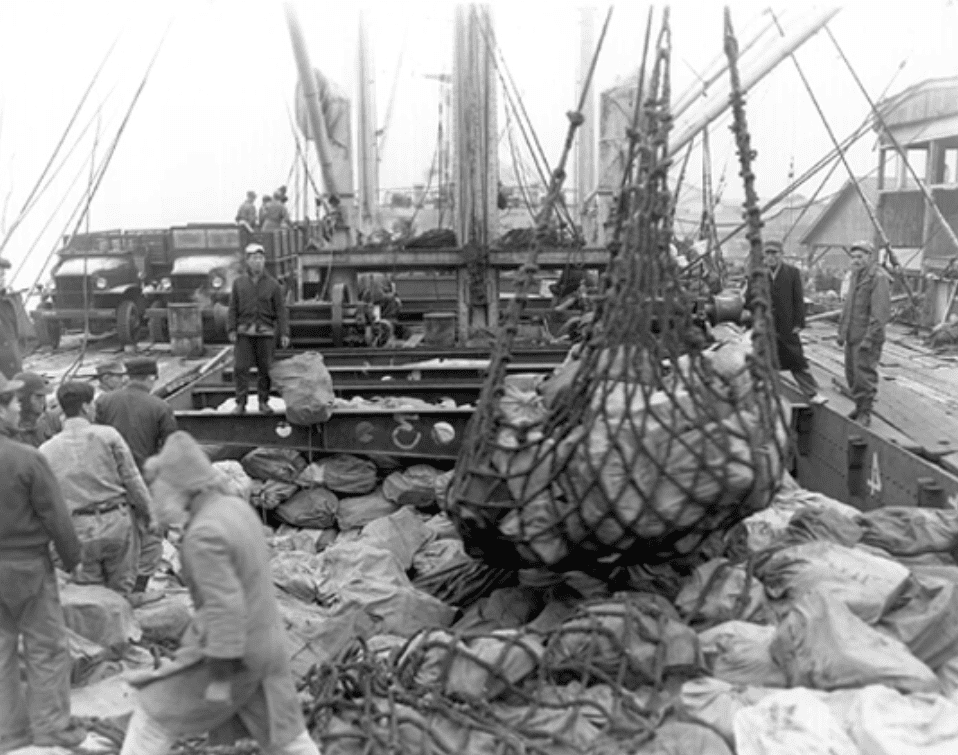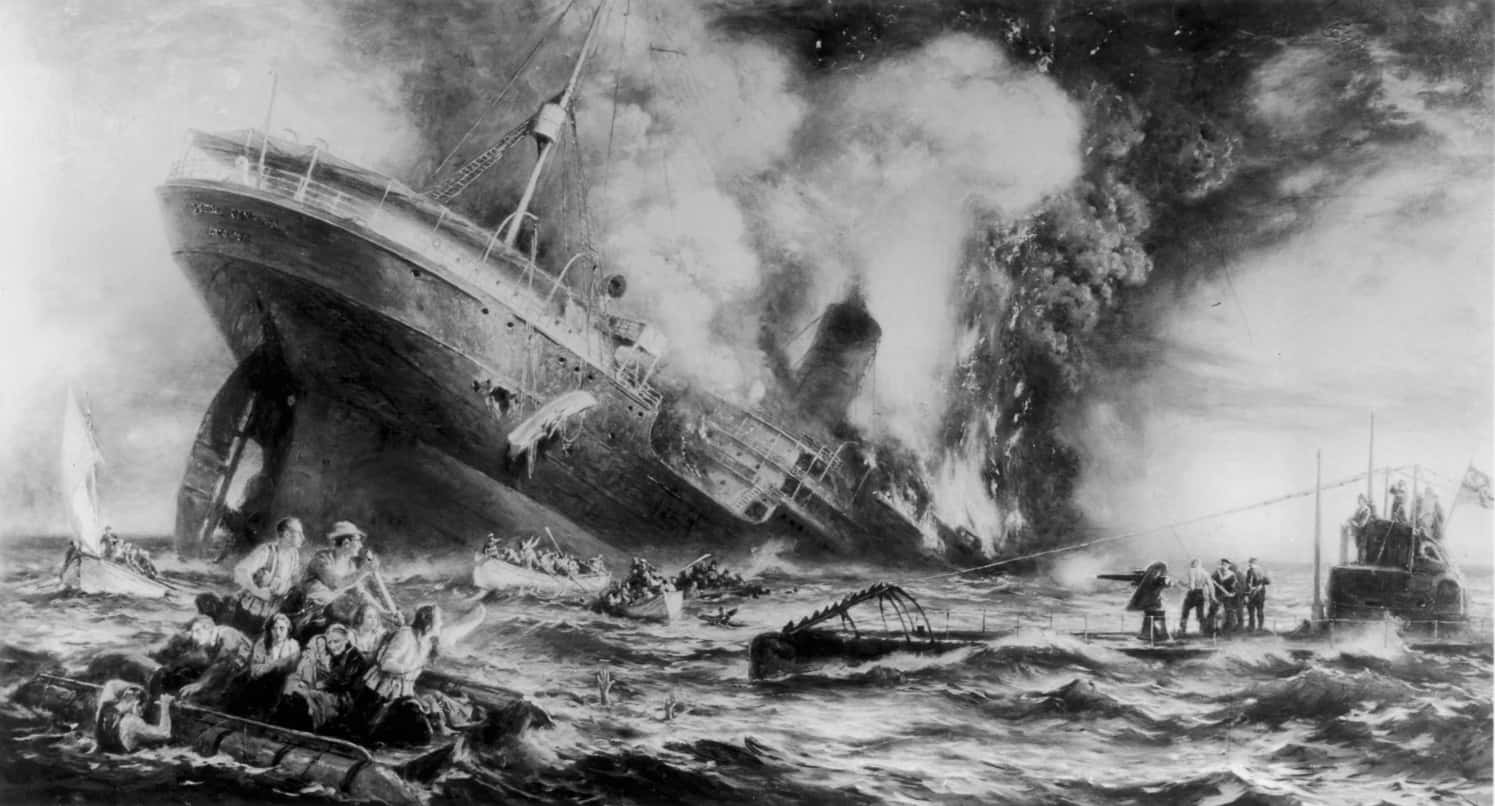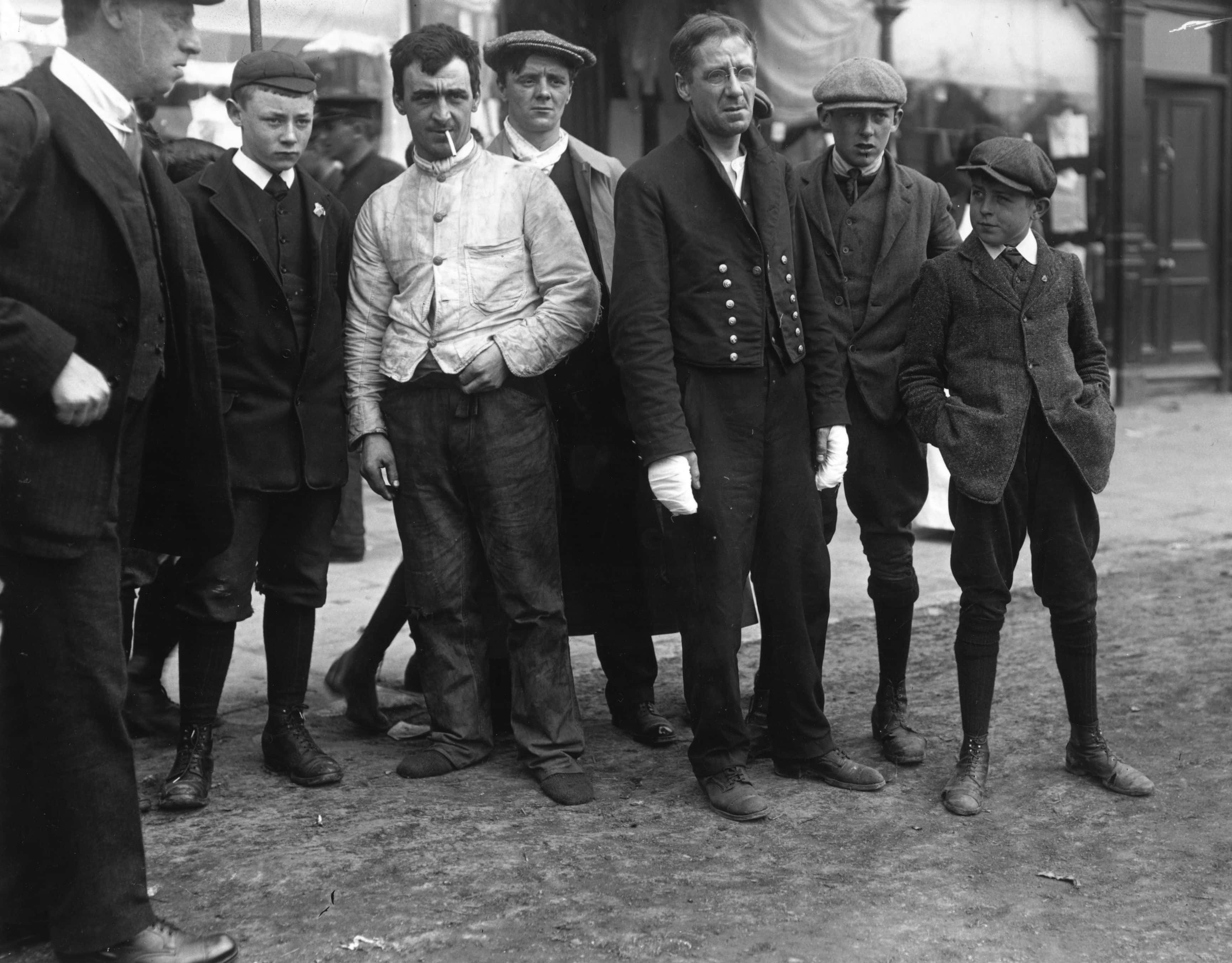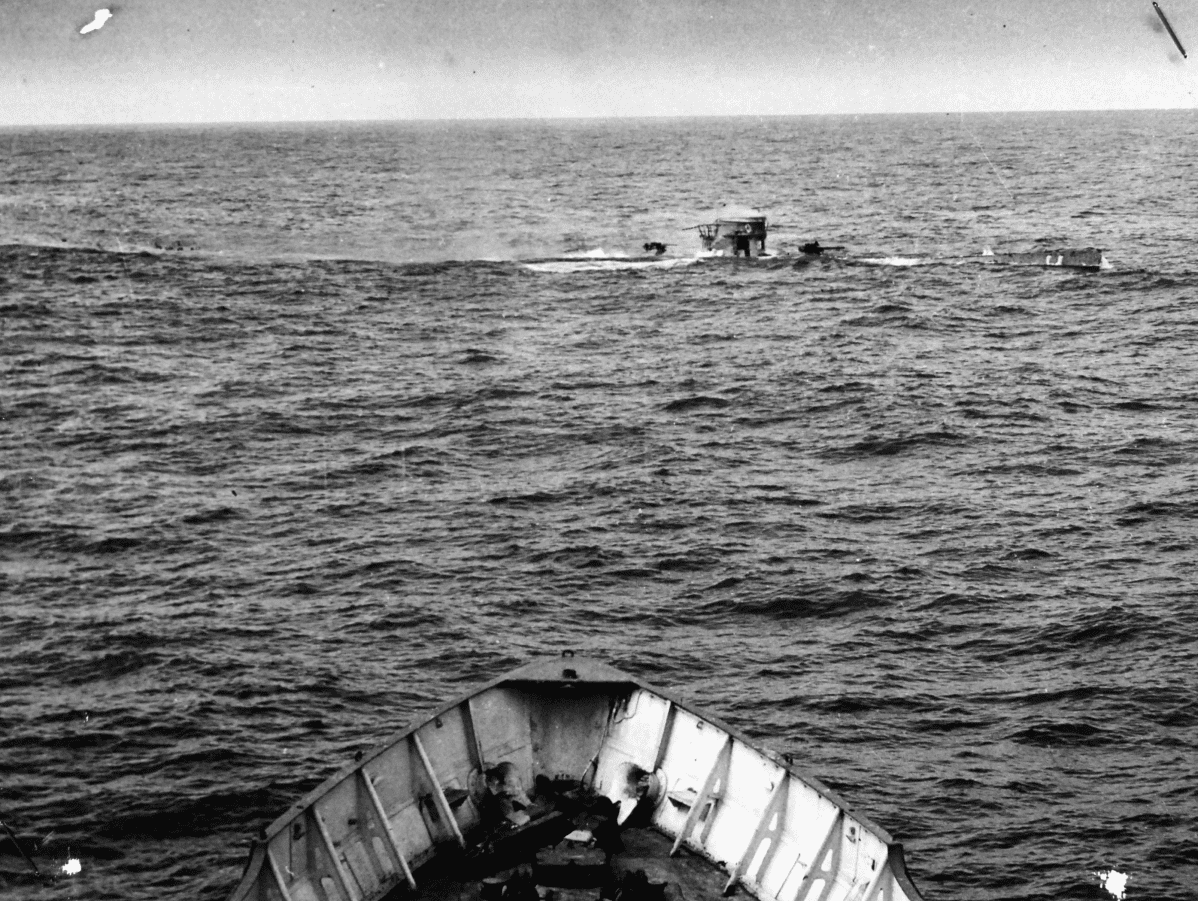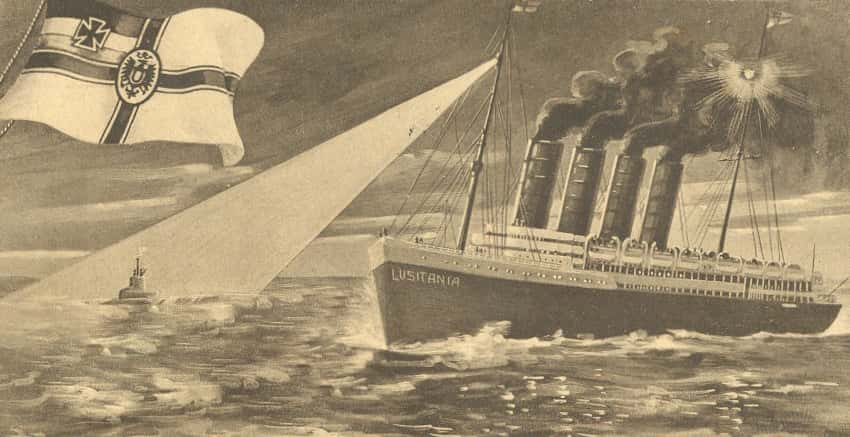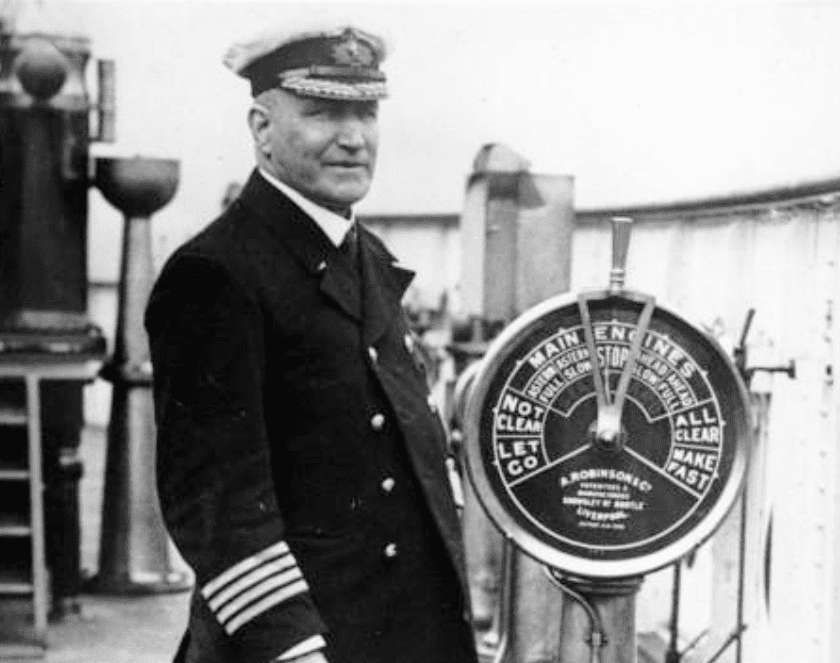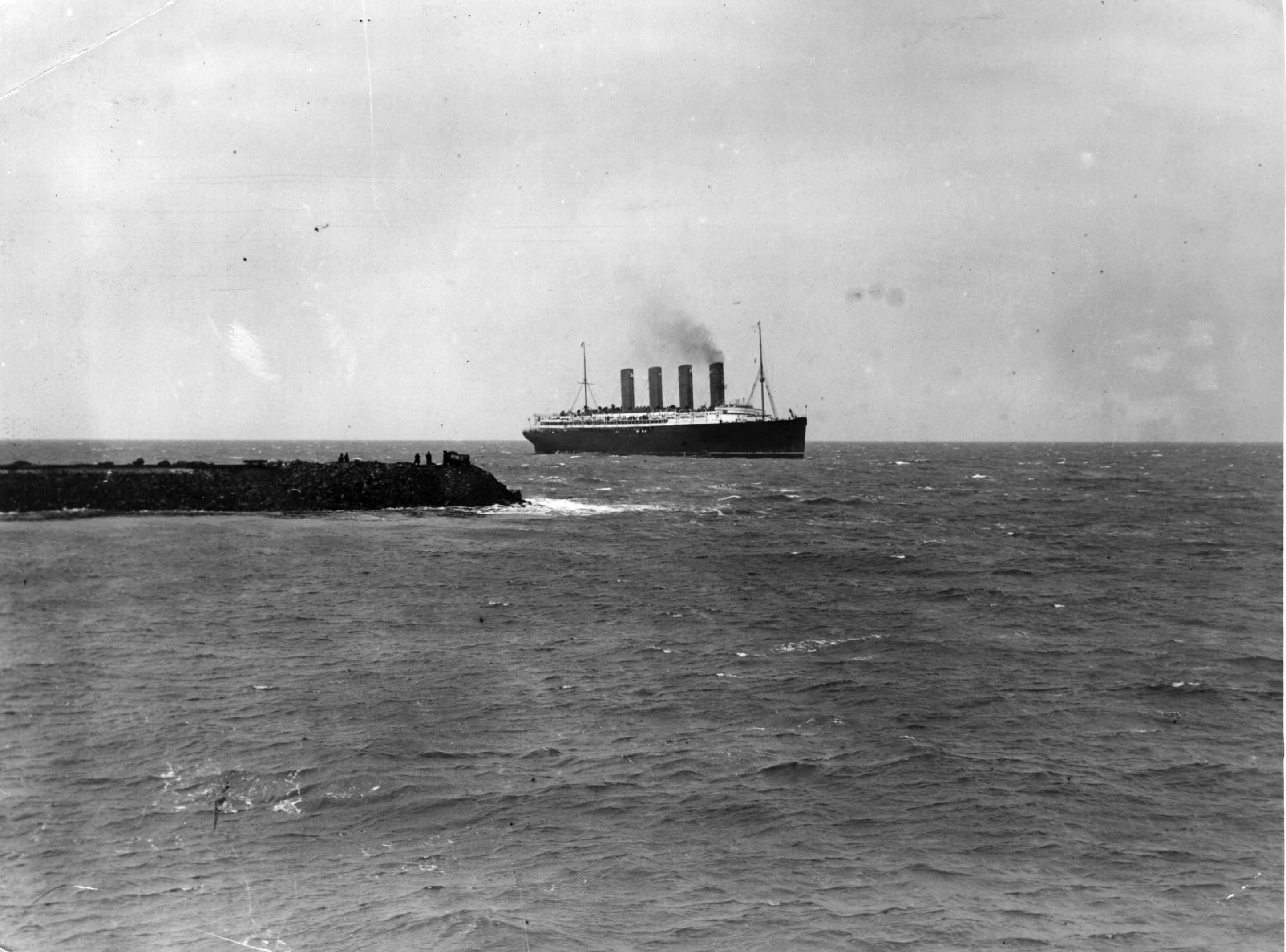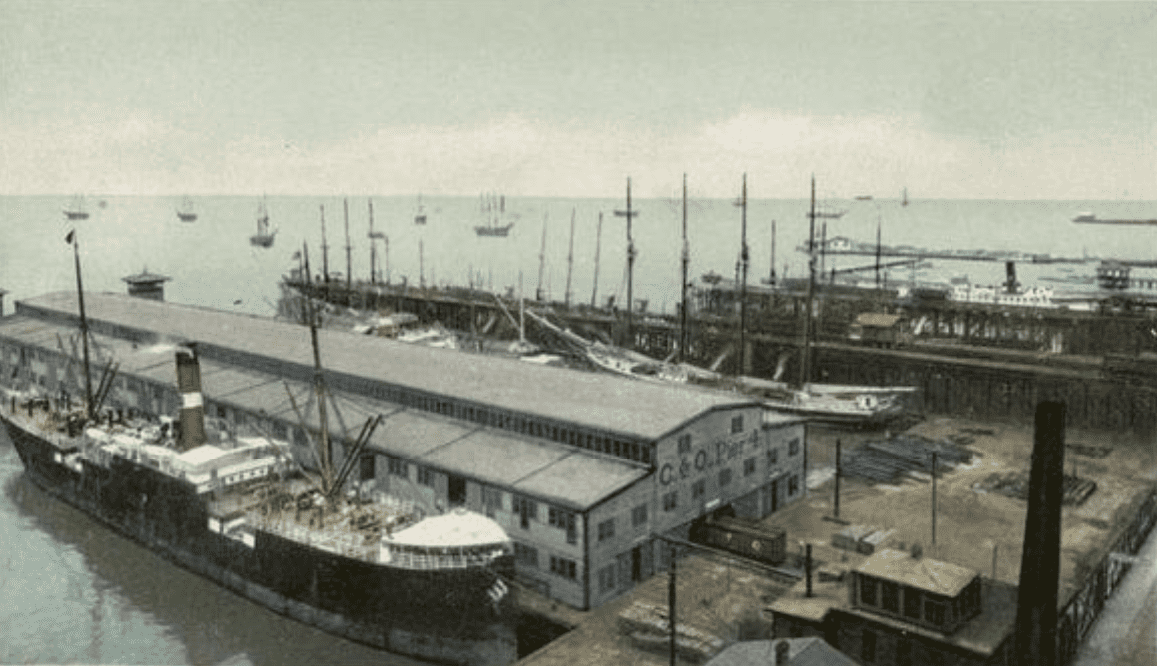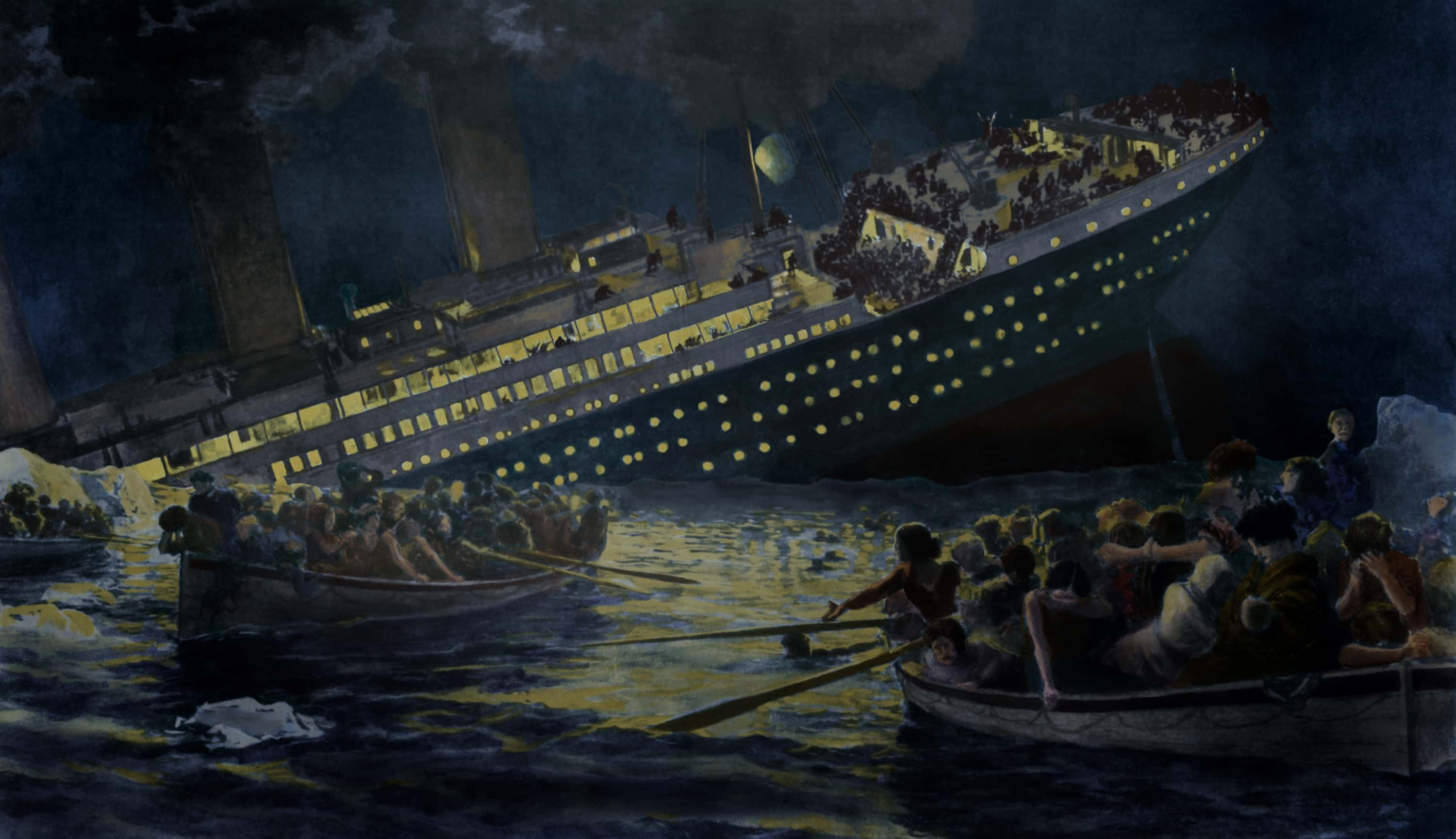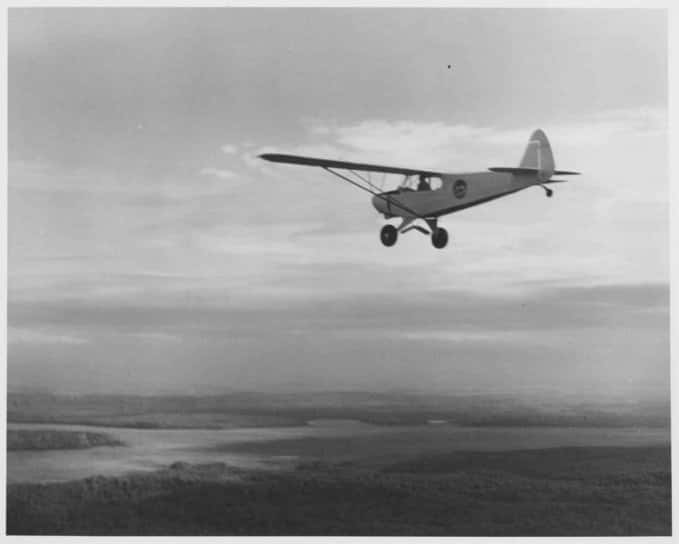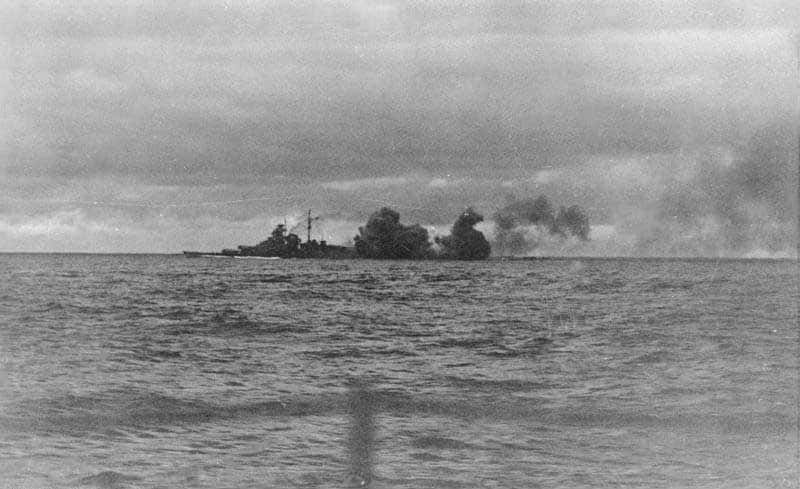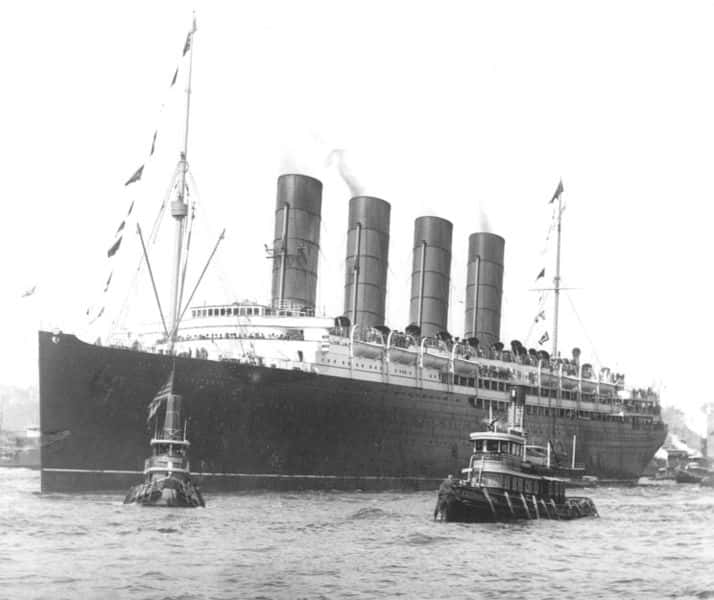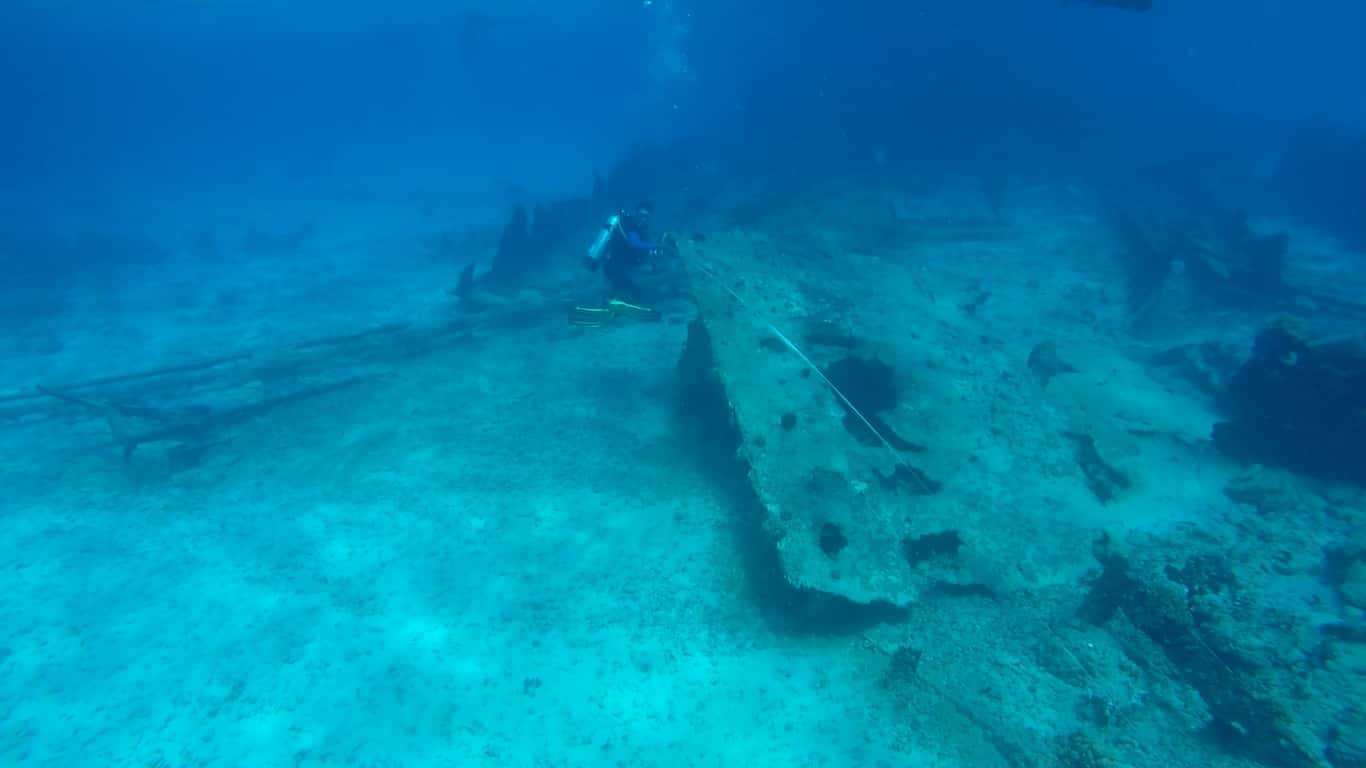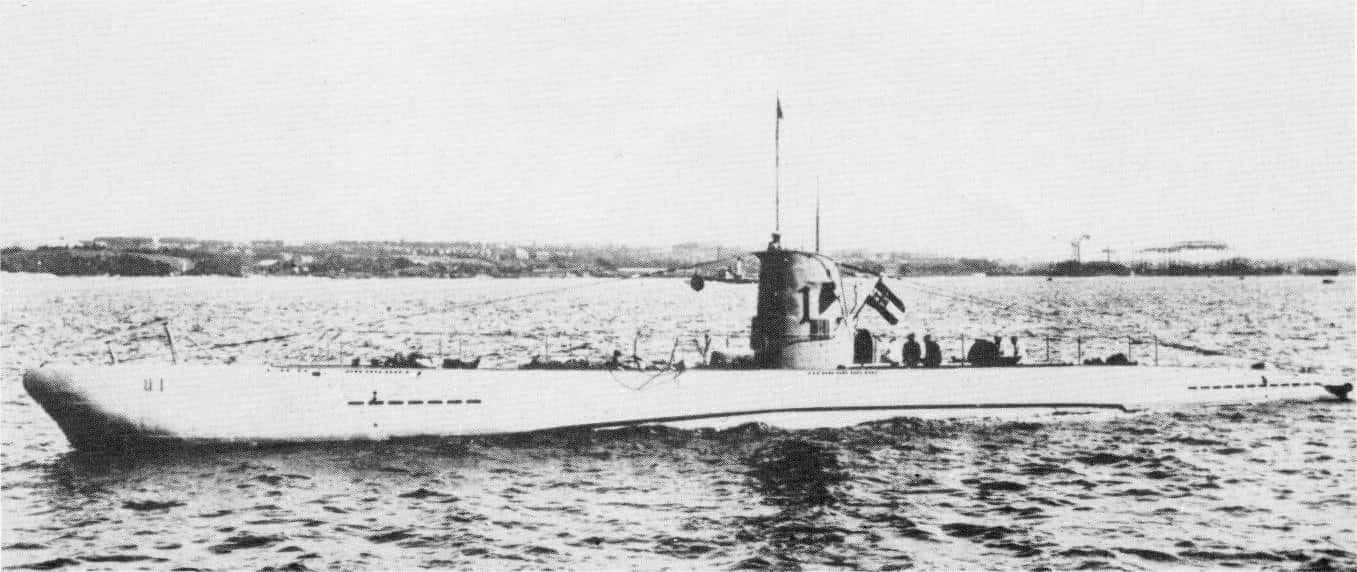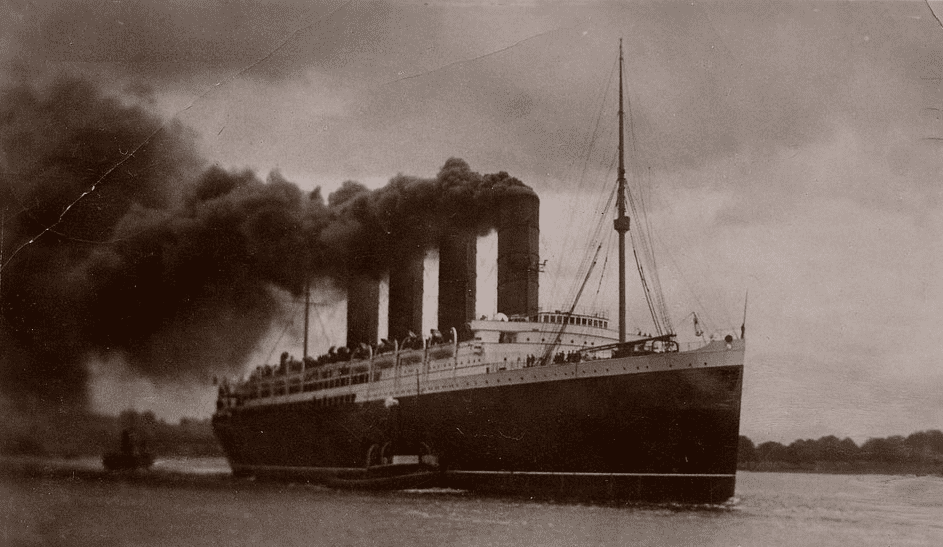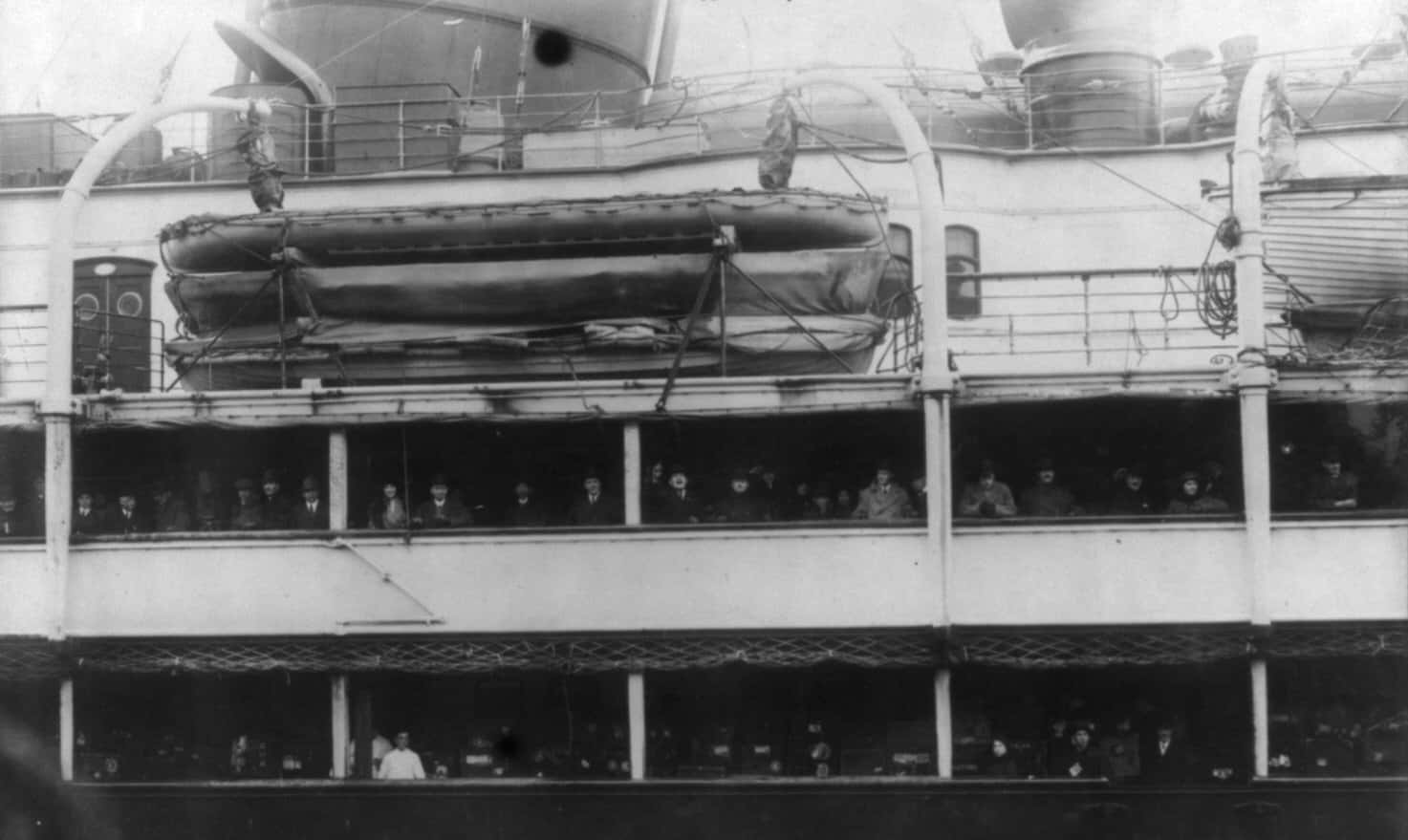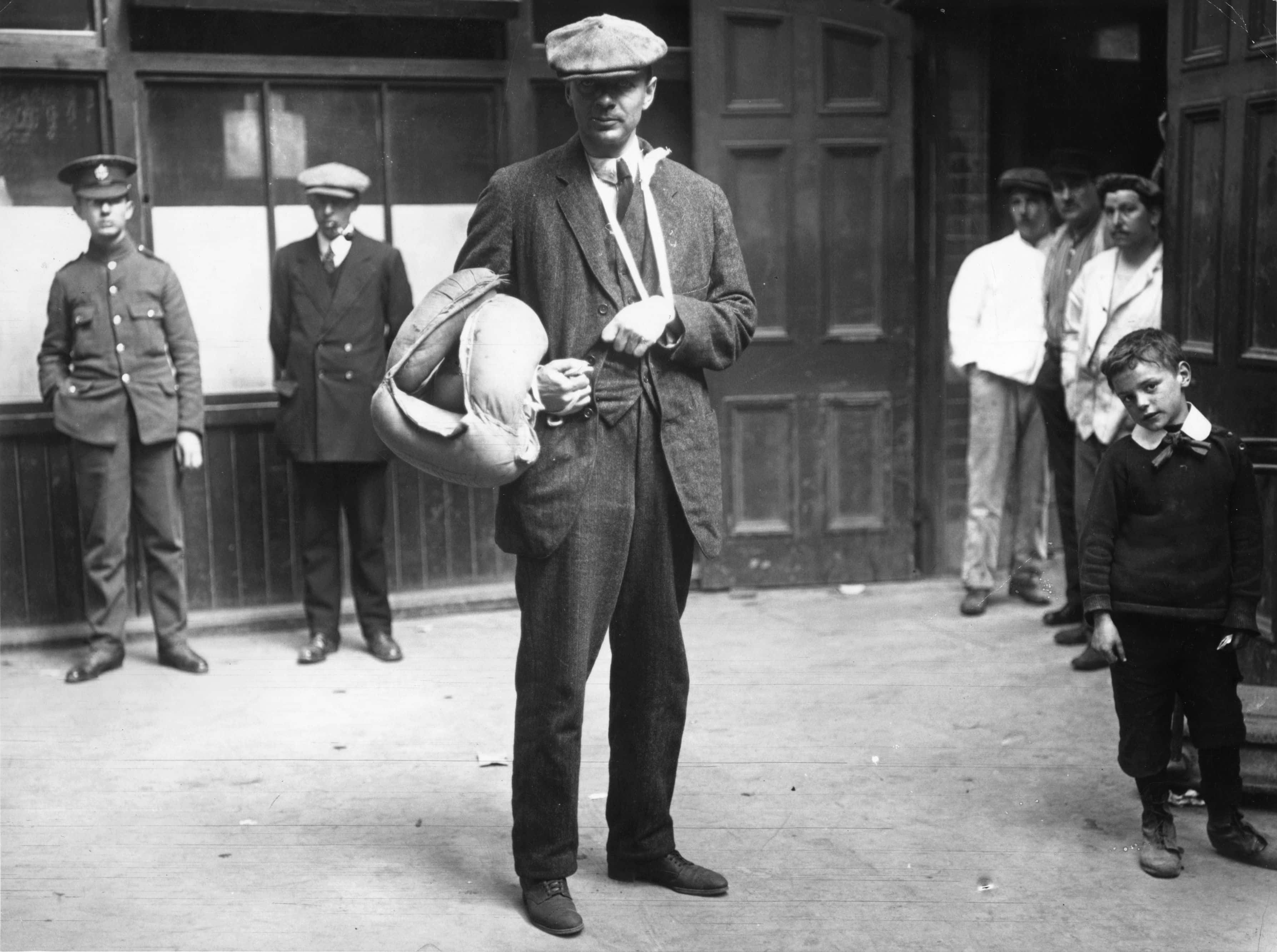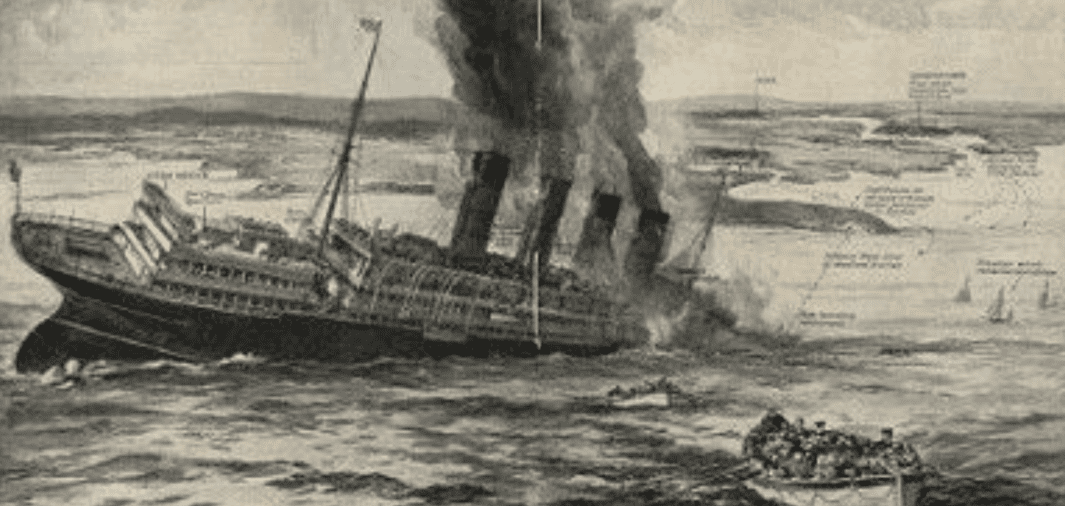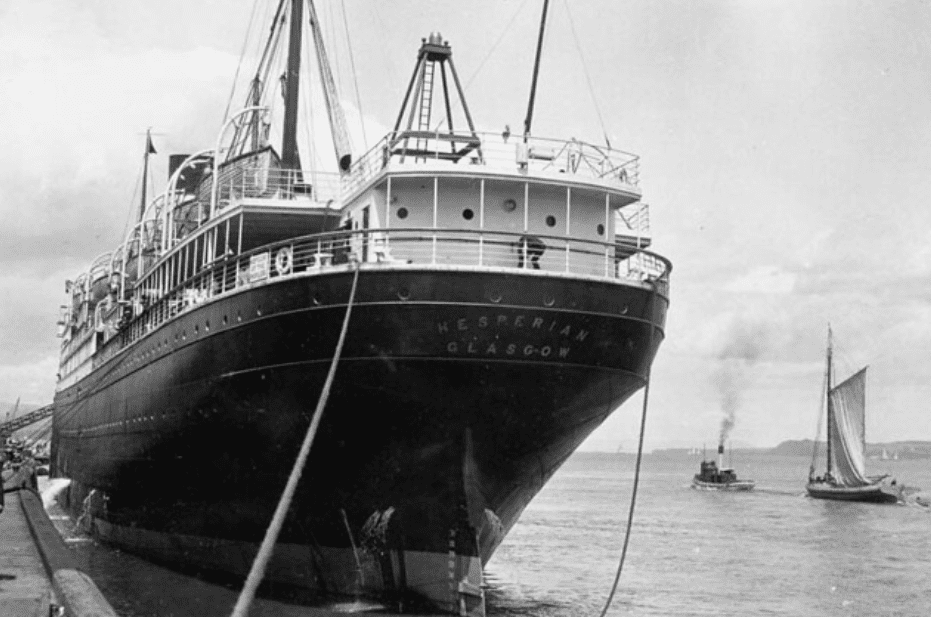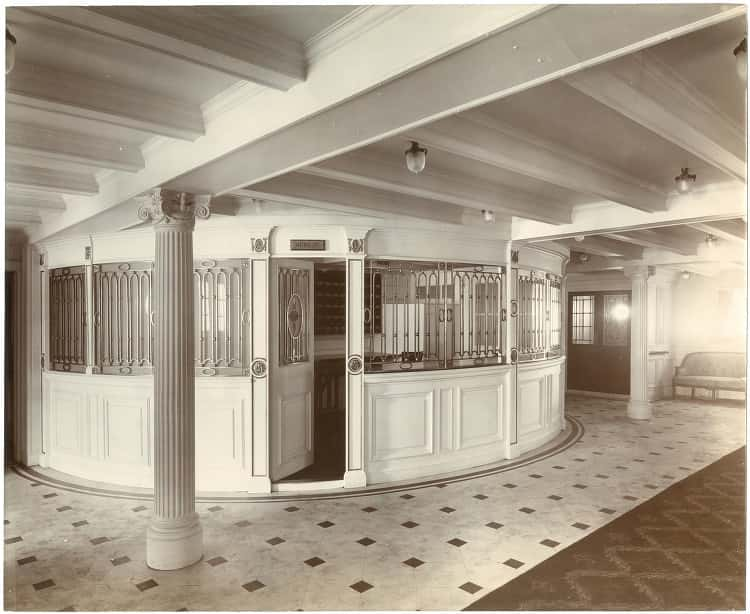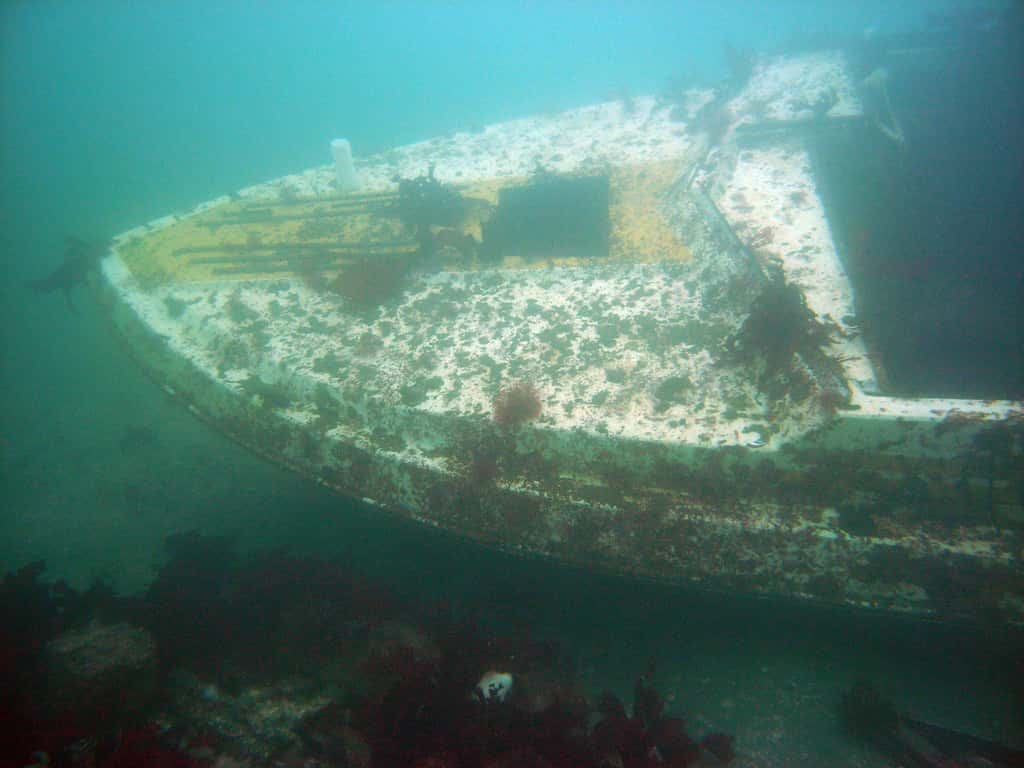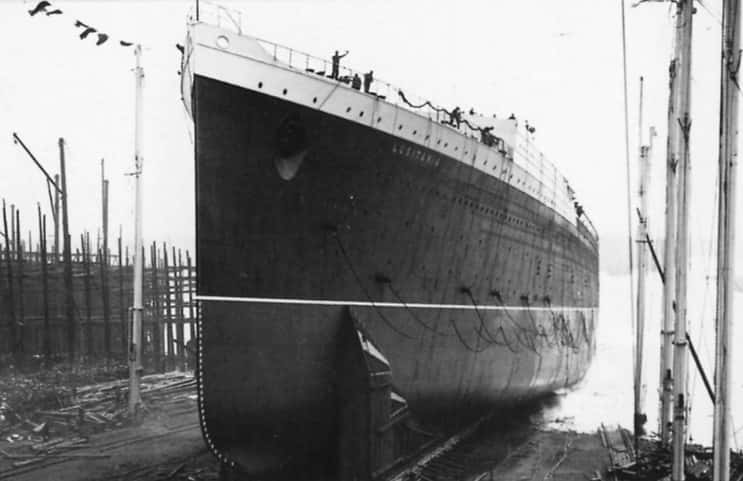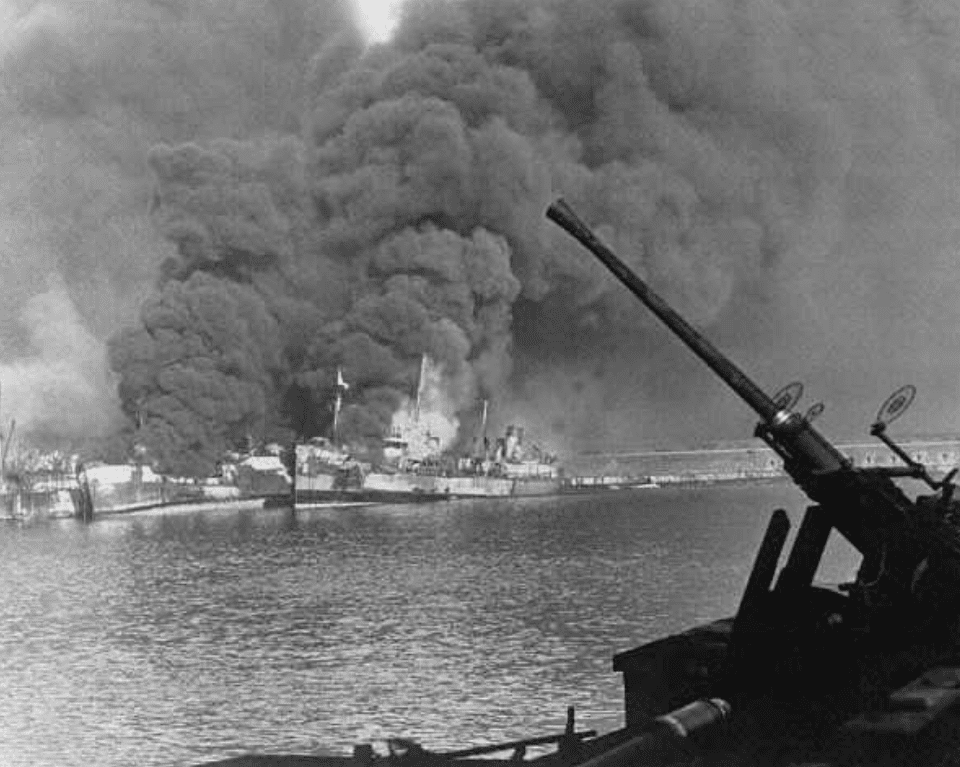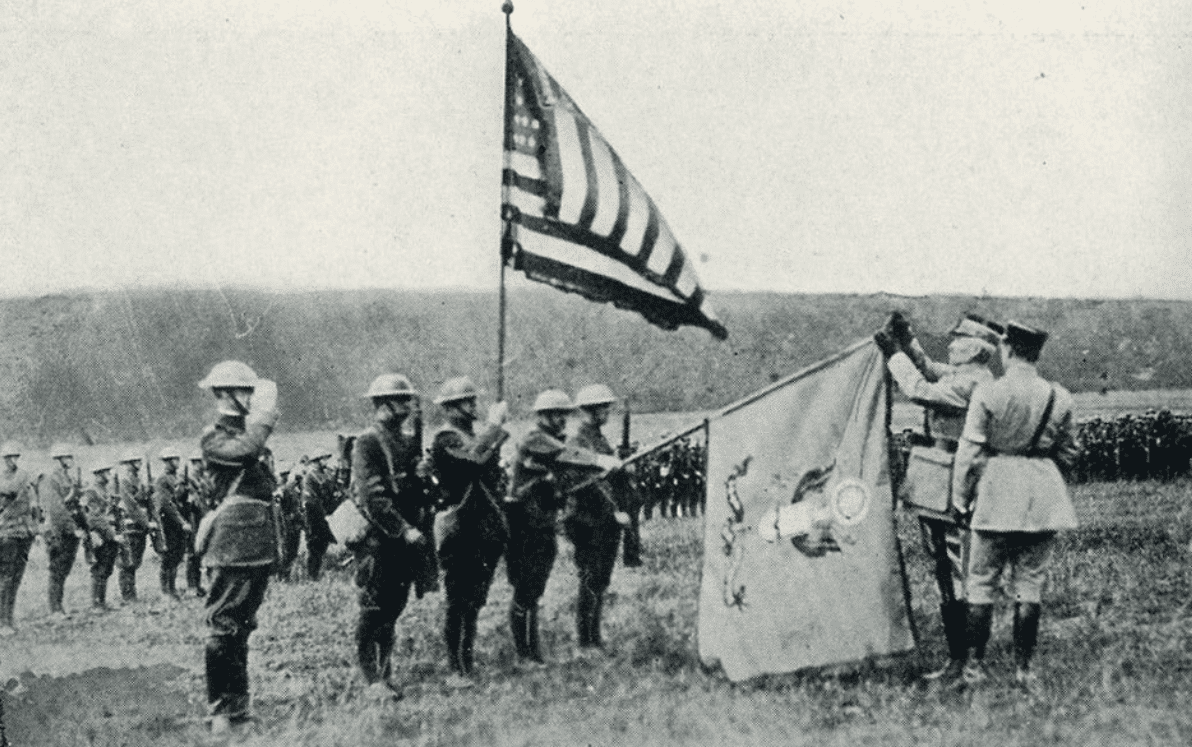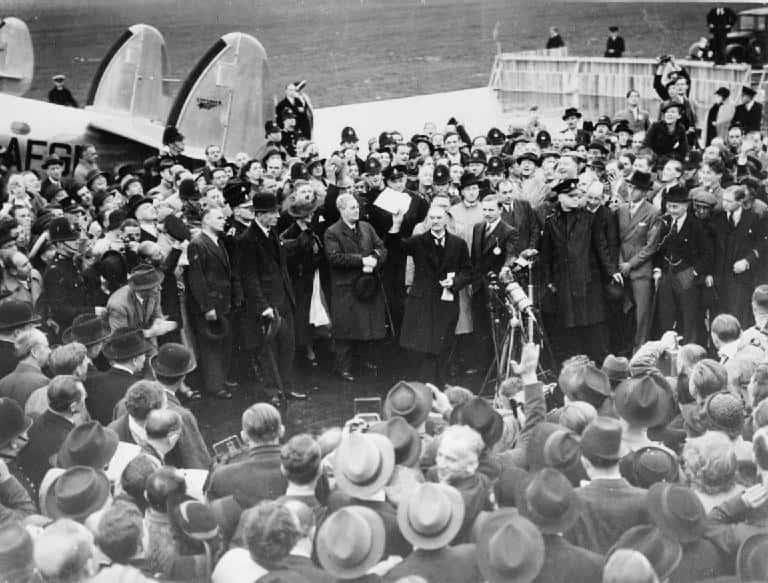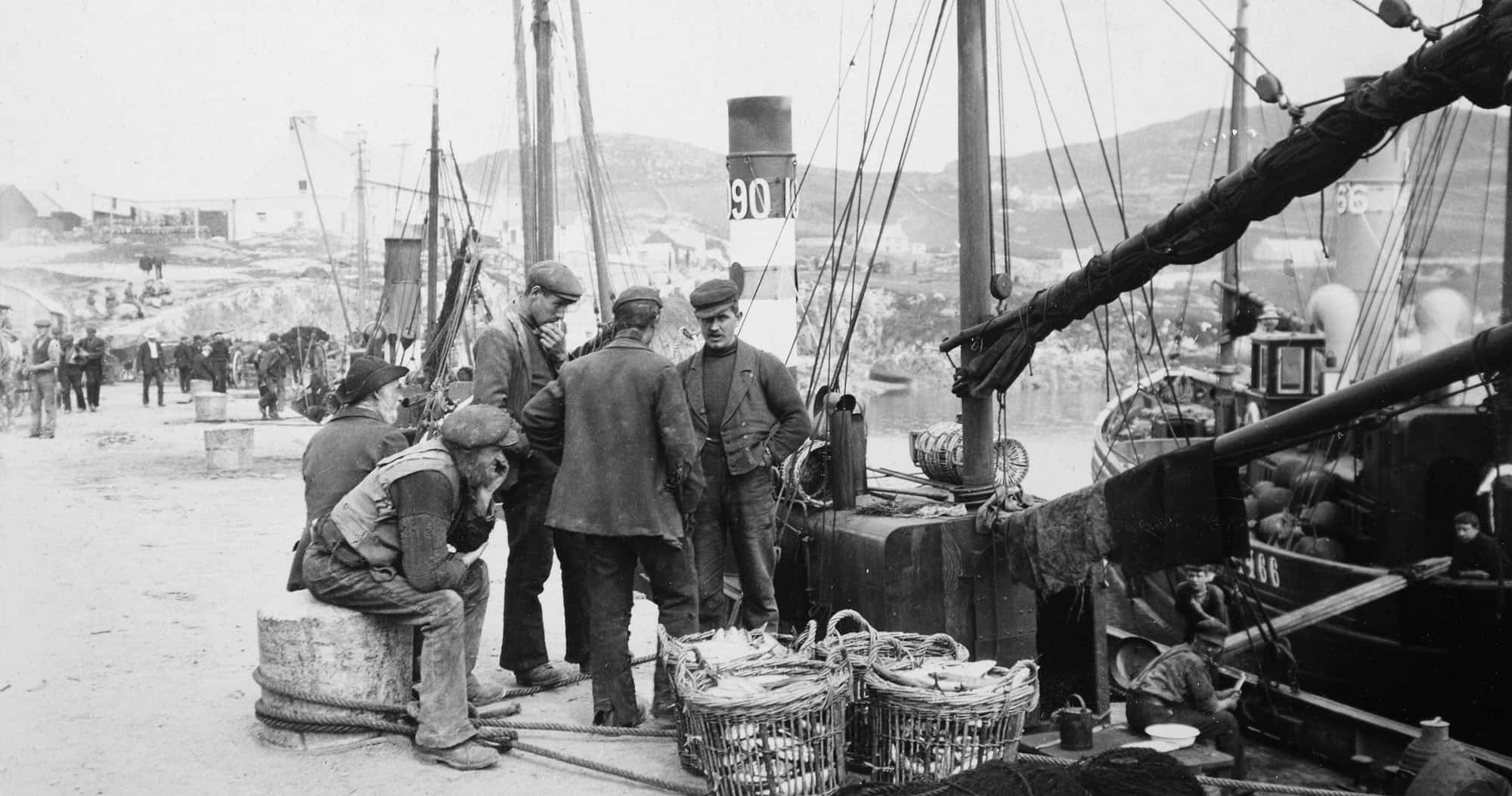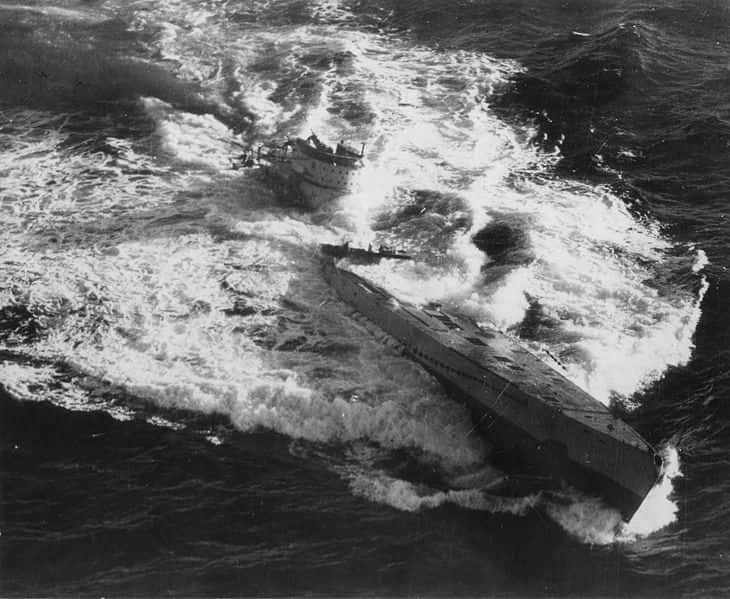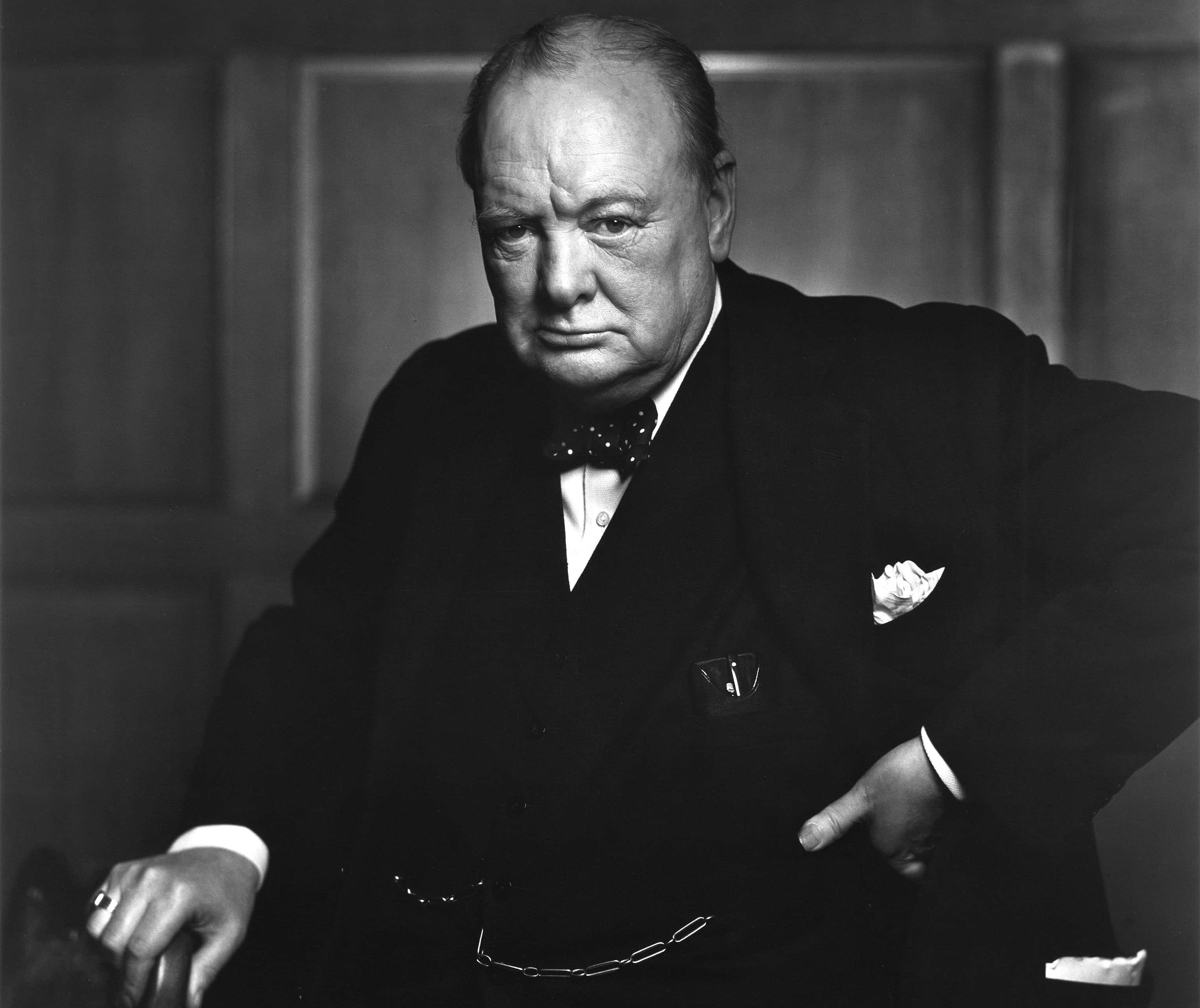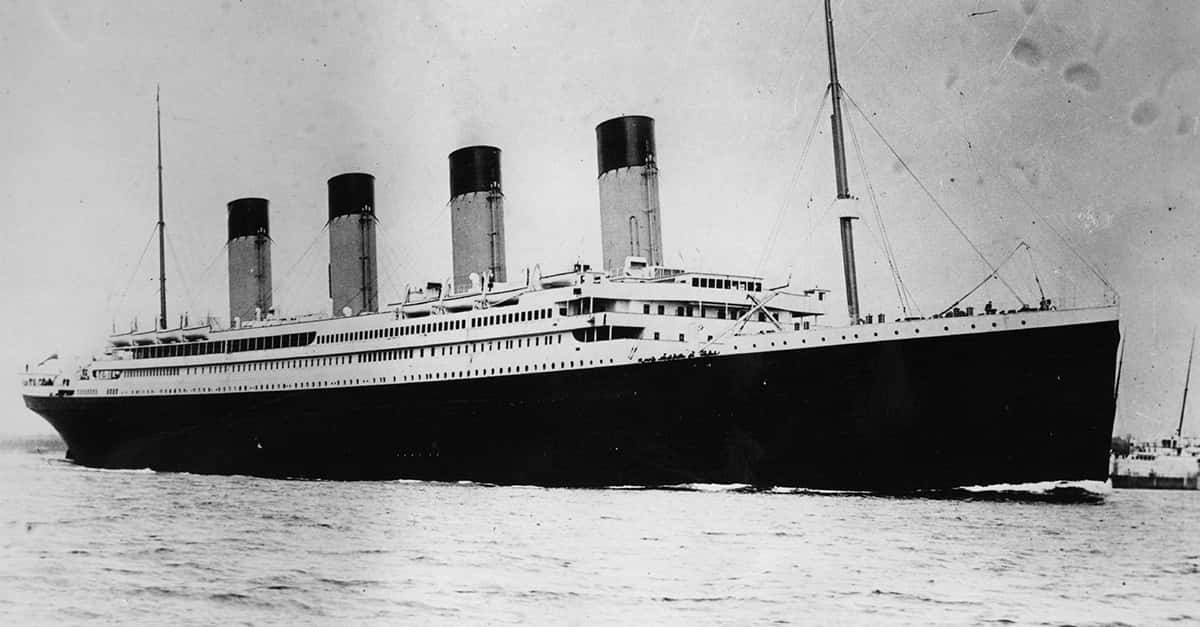The sinking of the RMS Lusitania is one of the great tragedies of the early 20th century, and the fallout from it would have a massive impact on the course of the rest of the century. But the ship was an amazing feat of engineering for its time, and quite famous in its own right before its devastating run-in with a German U-boat.
“It [the torpedo] went through the front of the boat so the water was naturally going in fast and all those people who were down there [in the lower decks] were getting drowned.”
—Barbara Anderson McDermott, One of four children who survived the sinking of the Lusitania.
Lusitania Facts
40. Built to Last
The RMS Lusitania was built by John Brown & Co. Ltd, and belonged to the prestigious Cunard shipping line, which is still running some of the largest ships in the world today. The Lusitania was launched by Cunard on June 7th, 1906.
39. That’s A Fast Boat
Designed by Leonard Peskett, the Lusitania was built to be used by the British Navy in times of war. With this in mind, it was developed to be fast, with a top speed of 26.7 knots, which gave it the ability to travel across the Atlantic in under five days.
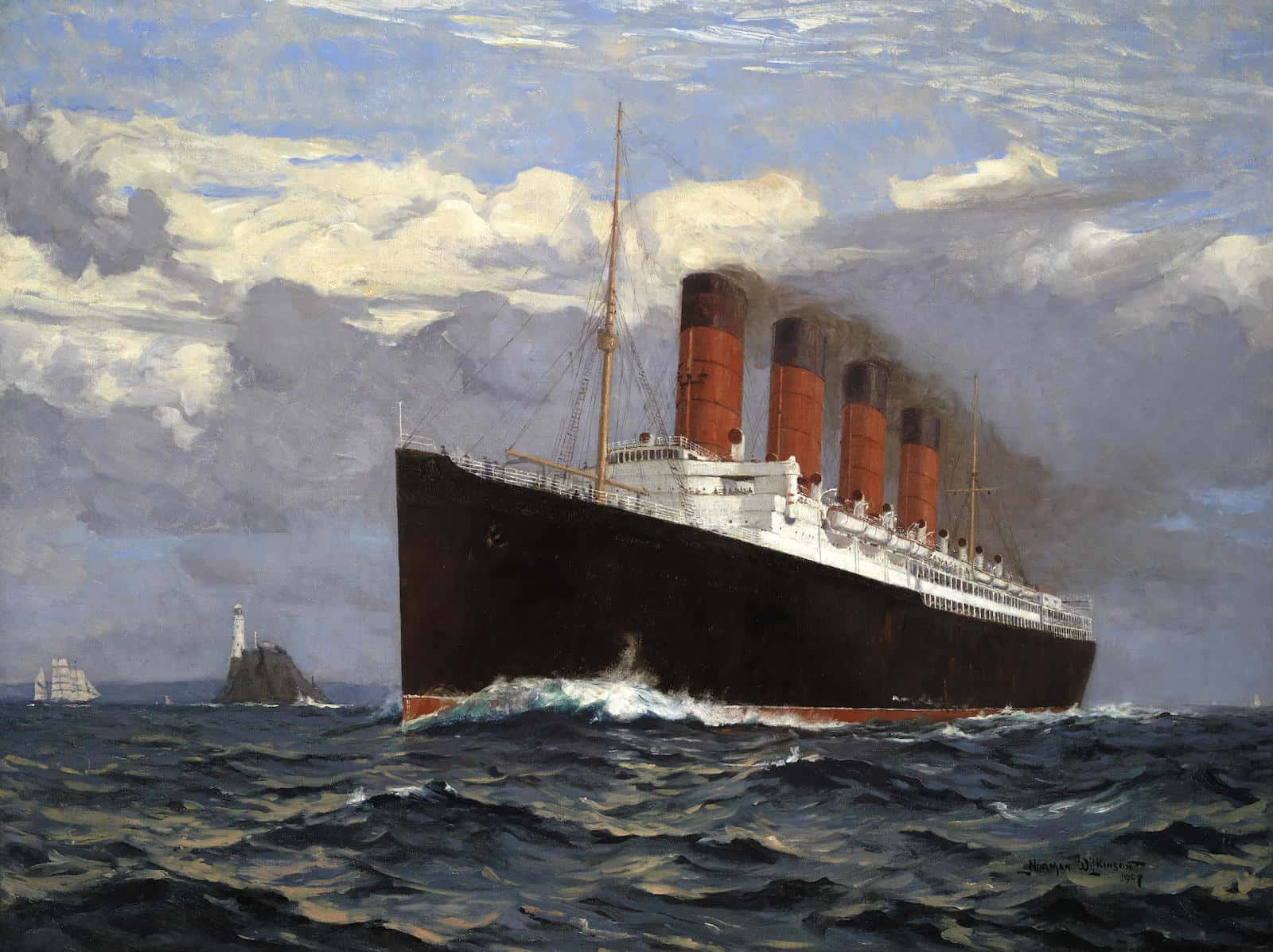 Wikipedia
Wikipedia
38. To Control the Seas
The ship was originally created as a response to Germany dominating much of the Atlantic trade due to their classic German engineering. So, even before the war, the battle was on.
37. Mail Money
RMS stands for Royal Mail Ship. This was used for large ships such as the Lusitania and the Titanic, as they carried mail in addition to passengers and cargo. Carrying mail was a lucrative business for ships, and the Lusitania was contracted for £68,000 per year to do so.
36. Large Death Total
1,198 of the 1,962 people aboard died during the sinking of the Lusitania, with 128 of the people being citizens of the United States.
35. The Band Plays On
The highest survival rate of any group of passengers was the band, with three of the five members surviving.
34. Value Lost
$735,579 worth of value was lost during the sinking (in 1915 US dollars). That's equivalent to $17,583,397 in the year 2017.
33. Quick Sinking
The Lusitania sank in only 18 minutes, which is remarkably quick, accounting for why the number of casualties was so high.
32. German Interference
The sinking of the Lusitania took place on May 7th, 1915 by the German submarine SM U-20. The U-20 would sink 37 ships of over 145,000 tonnes over the course of the war. U-boat was derived from the German word "Unterseeboot" ("Submarine").
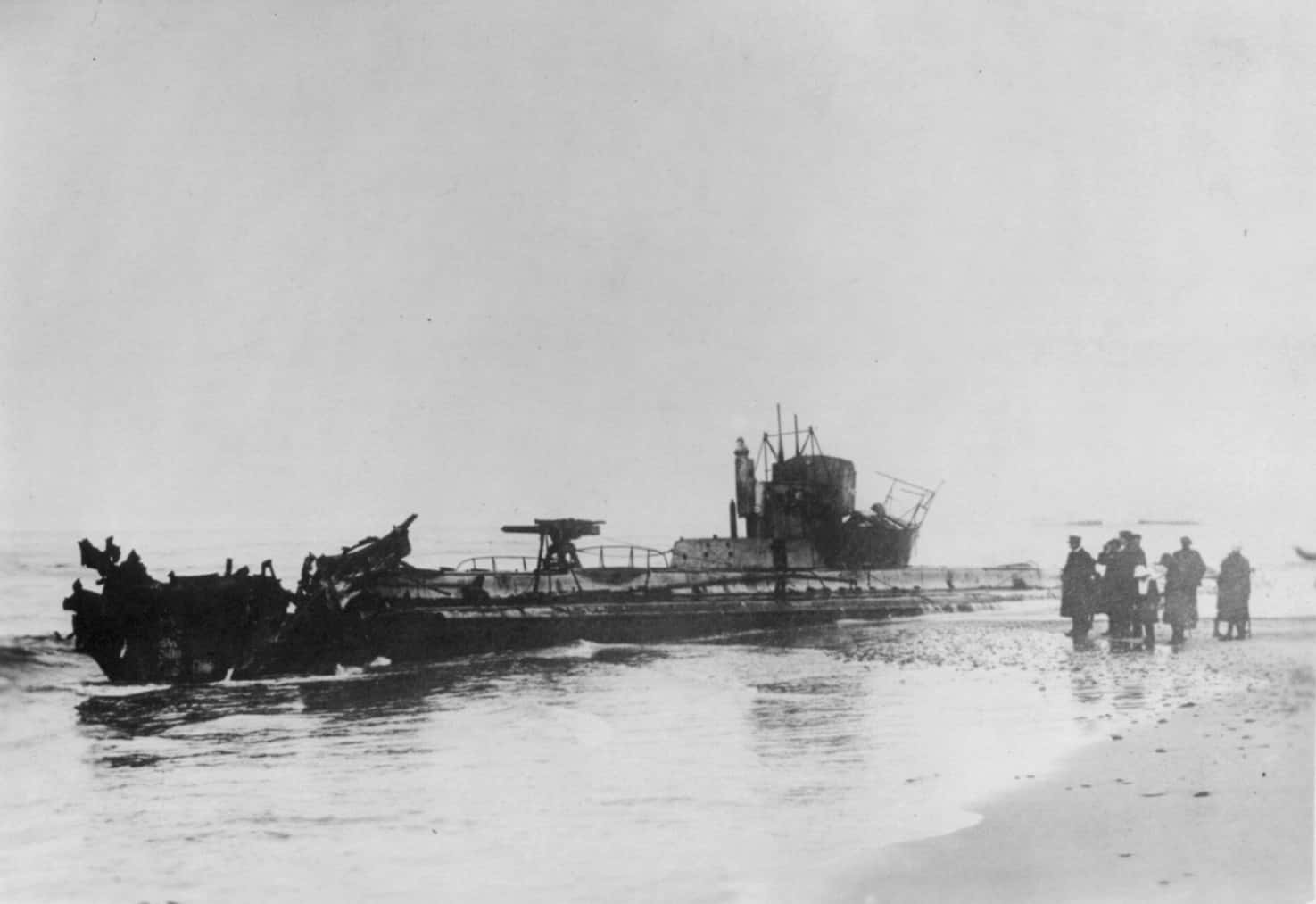 Wikimedia Commons
Wikimedia Commons

History's most fascinating stories and darkest secrets, delivered to your inbox daily.
31. Hunger
The reason for the attacks? During the war, the British deployed their Navy to blockade Germany from getting the supplies they needed, while Germany attempted to stop merchant ships from getting to the UK. It was essentially a battle between the two sides to starve each other.
30. Cause of Death
Just like in the sinking of the Titanic, most of the deaths were a result of drowning and hypothermia.
29. The Captain Lives
Though a majority of the people aboard died during its sinking, the captain of the Lusitania, William Thomas Turner, survived. He is not to be confused, however, with Orlando Bloom's dreamy character of the same name in Pirates of the Caribbean.
28. Veteran of the Waters
At the time of its sinking, the Lusitania was on its 202nd crossing, which would have put it at 101 round-trip transatlantic crossings.
27. Price Paid
A first class ticket aboard the Lusitania ranged from $142 to $380. That's quite a steep price to pay for death when you consider that the average American only made $20 a week at the time.
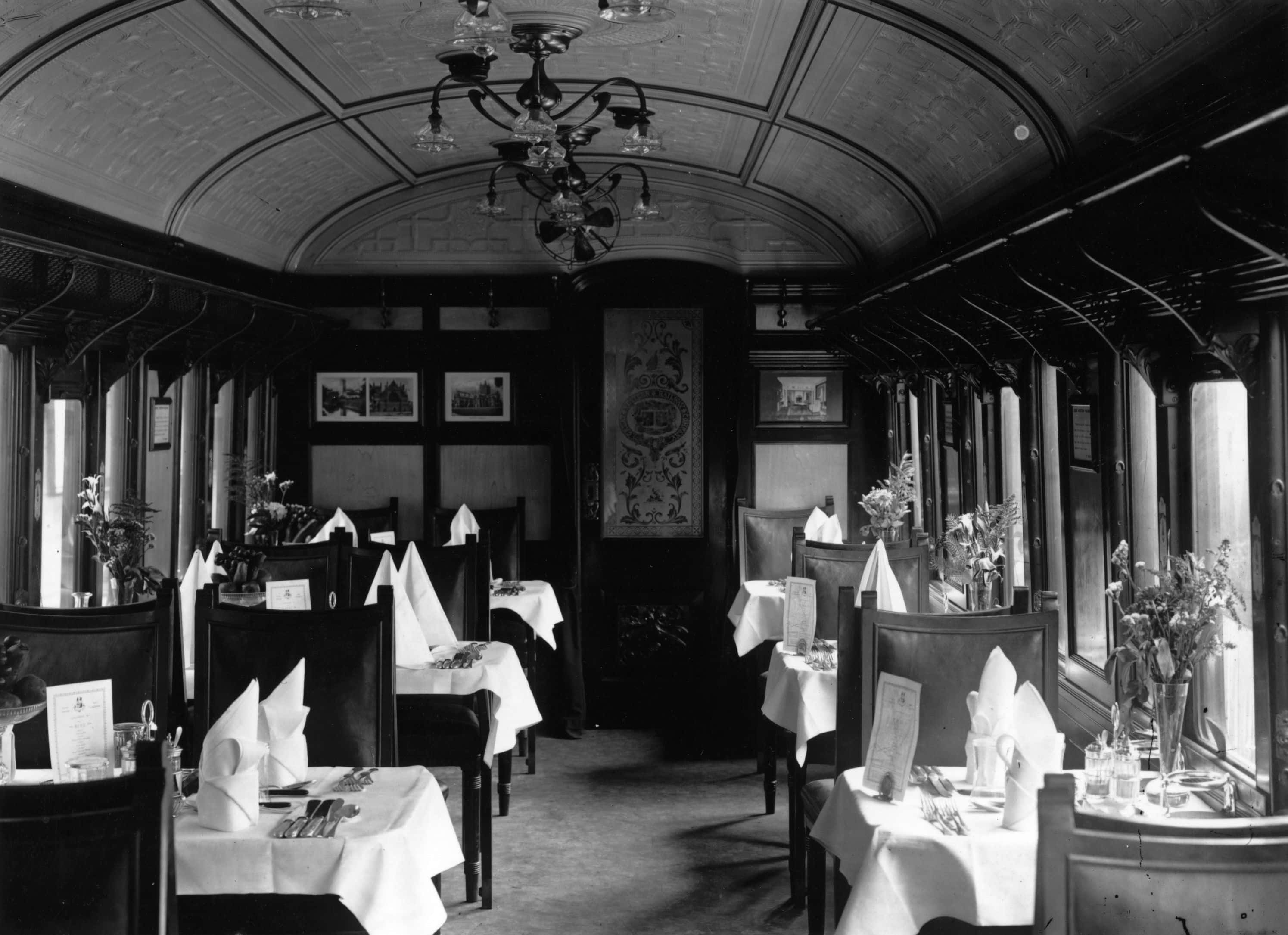 Getty Images
Getty Images
26. Convincing the Public
US citizens ended up shifting their support to Britain in a strong tide against Germany after the sinking and aftermath of the Lusitania. Coupled with the Zimmerman Telegram, American opinion officially swayed in favor of joining the war.
25. Anniversary
The third anniversary of the sinking of the Titanic was only two weeks prior to the tragic attack on the Lusitania.
24. Wright Bros Overhead
In 1909, the Wright Brothers flew flights over the Hudson Bay in celebration of the 300th anniversary of Henry Hudson discovering the Hudson river and the 100th anniversary of the Fulton Engine, with many of these flights going over the Lusitania to display the marvel of modern human engineering.
23. Stand Your Ground
After the sinking of the Lusitania, Germany stopped attacking neutral ships around Britain for about two years, although they never backed down from their position that the Lusitania was a legitimate target because it was a vessel carrying war materials.
22. They Were Warned
Just prior to the sinking of the Lusitania, the Imperial German Embassy in Washington D.C. issued notices warning people that traveling on ships, particularly British ships, towards the United Kingdom was dangerous.
21. The Route Home
The Lusitania was traveling from New York to Liverpool at the time of the sinking.
20. Shallow Waters
The wreck of the Lusitania sits at a shallow depth of only 93 meters and is easily reachable. This contrasts that of the Titanic wreck, which sits at a depth of over 3,700 meters.
19. Hunting Ground
During World War I, German U-boats would wait near the coast of Ireland to hunt ships rather than take their chances in the vast Atlantic Ocean. Many British ships were thus sunk as they approached Ireland, including the Lusitania.
18. Fatal Mistake
Before its sinking, the Lusitania actually almost escaped the range of the U-boat simply by having a faster casual sailing speed. Some people theorize that the alignment of the two ships was a coincidence: in order to navigate as the ship approached the Old Head of Kinsale, the captain of the ship lined up with a lighthouse, putting it back in range of the German submarine.
17. Counter Productive Lifeboats
When the order was given to launch lifeboats from the sinking ship, many of the lifeboats were unable to be lowered due to the severe list of the boat. In total, only six of the 48 lifeboats were able to be deployed, contributing to the great loss of life.
16. Family Tragedy
A great many of those who died during the disaster were unable to ever be identified due to the fact that their next of kin had also died in the sinking.
15. The Bigger They Are, The Harder They Fall
Due to its massive size at around 800 feet long, the Lusitania hit the bottom of the sea floor before it actually submerged.
14. Lightning Strikes Twice
Canadian citizen Frances Stephens was aboard the Lusitania when it was sunk, and her body was recovered and on route back to Canada aboard the RMS Hesperian when the U-20 then sank the Hesperian, making Stephens twice a victim of the German U-20.
RMS Hesperian
13. Triple Survivor
A man by the name of Albert Charles Dunn was also reported to have been on two boats sunk by the U-20—and survived both attacks. He also is said to have been aboard the Titanic when it had its meeting with an iceberg. Talk about a lucky guy.
Titanic
12. I’m a Survivor
There are sadly no more survivors still alive today. The last survivor of the famous Lusitania’s sinking was Audrey Lawson-Johnston, a saloon class passenger who passed away in 2011.
11. Bad Press Isn’t Always Good Press
To get an idea of what the American press was printing, some of the titles of American newspapers read “German Pirates Sink the Lusitania,” “A Deed For Which A Hun Would Blush…” and “What Women and Children Endured When Tirpitz’s Murderers Sent The Lusitania To Her Doom.”
10. By the Numbers
The Lusitania had four triple blade propellers, was 787 feet in length and 60 feet tall, and had nine passenger decks.
9. Wasn’t Me
People claim that the Royal Navy bombed the wreck of the Lusitania, with one Irish diver describing the wreck as "like Swiss cheese."
8. Direct Warnings
Between the time of the ship's departure from New York and its sinking on the coast of Ireland, there were a total of 23 sunken ships off the coast of Ireland. The Lusitania received directives to stay away from the coast of Ireland in the days leading up to its sinking, but they did not receive any news about the sinking of any other ships.
7. Arms Aboard
There were indeed munitions aboard the Lusitania, but they were small arms and, apparently, empty shrapnel shells.
6. Who’s To Blame?
While the German troops aboard the U-20 were no doubt responsible for the sinking of the Lusitania by breaching Cruiser Rules in targeting the ship, the British can also be held responsible for their role in shipping munitions aboard express passenger ships, and for their belief that if torpedoed, the Lusitania would still be able to limp into port.
5. Turning the Tide
Though the sinking of the Lusitania did turn the tide of American opinion against Germany and into joining the War, it also brought about some xenophobia against German-Americans, who were then a part of the melting pot that was American society. It also did not directly prompt the U.S. into joining the war, as it wasn’t until April 6th, 1917 that they officially did; almost a full two years, and only after the Germans declared they would again conduct unrestricted warfare on ships.
4. Diverting Blame
Britain deferred all blame to the German government and absolved the entirety of those Brits involved of any negligence, including the Admiralty, the Captain, and Cunard.
3. Call To Duty
After hearing the explosions, many local Irish fishermen ran to the rescue and aided the attempts to salvage all the life possible from the Lusitania and the surrounding waters. If not for these brave Irishmen, the death toll could have been even worse.
2. Two Sides To The Story
While the Allies claimed that the U-20 launched two or three torpedoes to sink the Lusitania, the Germans maintained that they shot only one and that the second explosion was caused by the ignition of ammunition hidden below the cargo of the ship. Regardless, it was this second explosion that proved to be the fatal blow to the Lusitania.
1. War Schemes?
The sinking of the Lusitania is seen as a merciless act by the Germans, but historians wonder if the ship may have been deliberately placed in danger by British authorities. This is backed up by a letter Winston Churchill wrote, which said that it was "most important to attract neutral shipping to our shores, in the hope especially of embroiling the United States with Germany." On top of that, although British authorities knew of the presence of a U-boat, they did not divert the Lusitania, nor did they move to protect it as it approached the location.


